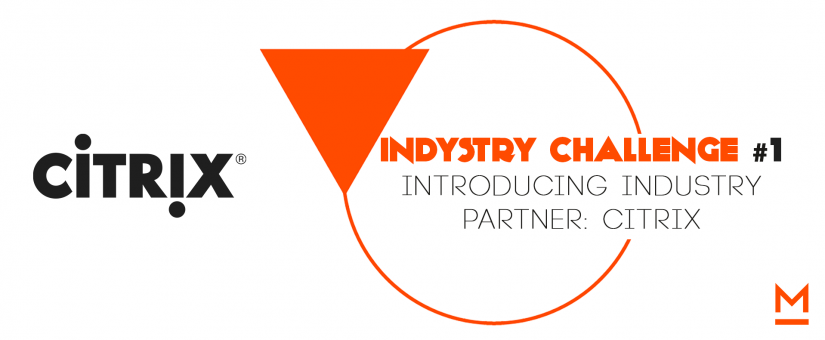
Introducing Industry Partner: Citrix
- Posted by Metavallon VC Team
- On March 28, 2018
As one of our four Partners in this first Industry Challenge at Metavallon VC, we are introducing Citrix: a software and cloud computing leader with multinational offerings that include server, application and desktop virtualization, networking, and software as a service (SaaS).
Citrix helps customers reimagine the future of work by providing the most comprehensive secure digital workspace that unifies the apps, data and services people need to be productive, and simplifies IT’s ability to adopt and manage complex cloud environments. Citrix solutions are in use by more than 400,000 organizations including 99 percent of the Fortune 100 and 98 percent of the Fortune 500. Citrix Greece MEPE is an R&D Center of Citrix, based in Patras, with full-time staff of more than 75 people, 3/4 being highly specialized software engineers involved with a diverse set of research & development activities, in the analytics, cybersecurity and telecom domains.
Industry Challenge #1: Intelligent and secure networking in a hybrid- and multi-cloud world
The advancement of data center hardware and global network links, along with respective virtualization and software-defined networking technologies, have resulted into the ubiquitous cloud infrastructures we have today. Here lies the opportunity, according to Citrix, to take advantage of the emerging technology trends and fulfil their mission: to power a world where people, organizations and things are securely connected and accessible to make the extraordinary possible.
What areas are we looking together in this Industry Challenge? It is 5G, IoT, XaaS/Cloud, Big Data analytics, Network, Cloud and Infrastructure that appeal most to Citrix, their customers – and to us as investors.
Opportunities foreseen by Citrix
Citrix sees technology trends as drivers of market opportunities. Based on their track record in this domain, here are the technological trends that they currently anticipate that will influence how next generation clouds and networks will evolve over the next few years – and the trends they wish to see startups take advantage of:
1. Cloud topologies: A major part of cloud-based services/solutions is expected to span multiple public and private clouds, i.e. they will increasingly evolve to hybrid-/multi-cloud. Cloud vendors will offer/support incarnations of their cloud platforms for on-premises/private use, while customers will demand the flexibility to migrate/scale services across private and public clouds, as well as different public clouds.
2. Cloud infrastructure: Public cloud infrastructures depend less and less on proprietary hardware. Open data center hardware (“whitebox” servers, switches, routers, etc.) will proliferate further, and the trend will expand to edge computing and last-mile networking. Infrastructure management will continue on the trend of mutable to configuration management (i.e. infrastructure-as-code) to immutable configurations. In terms of infrastructure scale, hyper-convergence (HCI) will see adoption in the private cloud space, but hyper-scale will remain prevalent in the public cloud space.
3. Cloud computing models: The trend towards finer-grain and more distributed computing will continue. The evolution from client-server to multi-tier to service-oriented to micro-services to server-less has been unfolding since the inception of the Internet, even before cloud. However, not all the workloads can be supported by that trend (e.g. HPC). In terms of compute placement, edge/fog computing (which could be considered as variations of distributed/grid computing, but with less homogeneity), will become more prevalent, largely as a result of the requirements of (B)5G & IoT. Cloud boundaries will become “fuzzy”.
4. Cloud platforms: Mirroring the cloud computing models trend above, cloud platforms have evolved to enable the IaaS, PaaS and finally FaaS (Functions-as-a-Service) models. The latter has been made possible via the advancement of light-weight virtualization schemes, containers, as well container management systems, which will gradually replace/merge with traditional cloud orchestration (VIM) platforms and are already the substrate of PaaS/FaaS platforms. Cloud-native computing will expand to other key domains, notably Communication Service Provider (CSP) infrastructures (already moving beyond ETSI NFV).
5. Cloud servers: The increasing diversity of the workloads will require more sophisticated cloud servers and instance types. Leaving aside specialized workloads (e.g. High-Performance/Quantum Computing), which will be necessary to support niche, but important, use cases and may be offered through clouds: Large scale event-based use cases (e.g. massive IoT) may be better implemented on FPGAs, while more demanding workloads (e.g. ML/AI model training or inference, which various people advocate will evolve to Software 2.0/Differentiable Computing/whatever the name) may be better deployed on GPUs / TPUs. Public clouds already offer such instance types, and this trend will continue and probably accelerate.
6. Services/application layer: On the services/applications/SaaS layer, the API economy will continue to thrive, cloud marketplaces will continue to expand and enterprises will base their digital transformation (i.e. digital business platform and digital applications) on these digital assets.
7. Cloud security: Last but not least, cybersecurity will continue to be both an opportunity and a threat. There is an entire set of technology trends in that area, which is probably beyond the scope of this. But a future clouds and networks strategy is deemed incomplete, if it doesn’t address the security aspects.
Coming up next
Interested in tackling these Opportunities? Are you working with #iot, #bigdata, #5G, #XaaS, #telecoms, #networks, #infrastructure?
As part of the Industry Challenge, we are organizing a Twitter Chat this Thursday, March 29, at 4:30pm EET along with our Industry Partners, to discuss and answer your questions.
Until then, you may prepare any questions you have on the challenges and post them on Twitter or Facebook using hashtag #metavallonvcIC – we look forward to connecting with you on Thursday!







